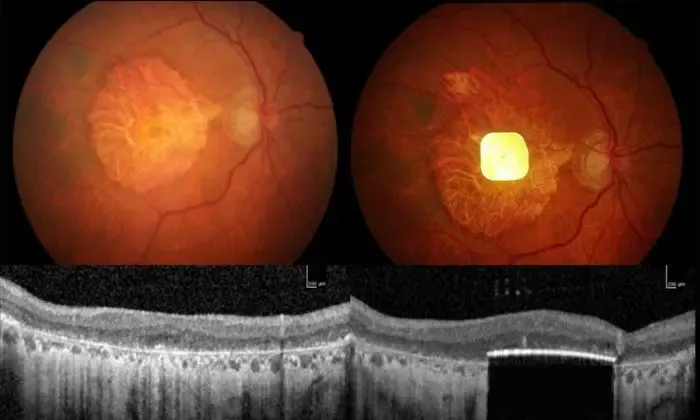Can a New Retinal Implant Restore Vision in Patients with Irreversible Blindness?

Synopsis
Key Takeaways
- New wireless retinal implant shows promise in restoring vision.
- Clinical trials indicate significant improvements in reading ability.
- Over 80% of participants achieved meaningful visual acuity gains.
- PRIMA device converts light into electrical signals for retinal stimulation.
- Research highlights potential for future vision restoration technologies.
New Delhi, Oct 20 (NationPress) A groundbreaking wireless retinal implant has demonstrated the ability to restore central vision in individuals suffering from advanced age-related macular degeneration (AMD), as revealed by clinical trial findings published on Monday.
Advanced atrophic AMD, often referred to as geographic atrophy (GA), stands as the primary cause of irreversible blindness among the elderly, impacting over 5 million people globally.
The research, conducted by experts from University College London, University of Pittsburgh, and Stanford Medicine, found that 27 out of 32 participants regained their ability to read one year after the implantation of the device.
This innovative device, known as PRIMA, is the first eye prosthetic capable of restoring functional sight to those facing incurable vision loss, allowing them to perceive shapes and patterns—commonly referred to as form vision.
“This marks the first instance where vision restoration efforts have yielded such remarkable results among a large cohort of patients,” stated José-Alain Sahel, chair of the Department of Ophthalmology at the University of Pittsburgh’s School of Medicine.
“Over 80 percent of patients successfully read letters and words, with some able to read entire pages of text,” Sahel added.
The findings, published in the New England Journal of Medicine, indicated that more than 81 percent of patients achieved significant improvements in visual acuity, while 84 percent utilized the prosthetic vision at home for reading numbers or text.
On average, participants improved by 25 letters—approximately five lines—on a standard eye chart with the device. More than 80 percent of the participants gained at least 10 letters.
As AMD advances, the central vision becomes increasingly distorted due to irreversible damage to the light-sensitive cells in the retina's center. In a healthy retina, these cells capture ambient light, transforming it into electrical signals sent to nerve cells lining the back of the eye and ultimately to the brain via the optic nerve.
The PRIMA device substitutes these lost photoreceptors with a 2x2 mm wireless implant that converts light into electrical signals, stimulating the remaining retinal cells.
A camera attached to specialized glasses captures images and projects them onto the implant using invisible near-infrared light. The implant then transforms this light into electrical pulses, reinstating the flow of visual information to the brain. Patients can modify zoom and contrast settings to enhance their functional vision.
One year post-implementation, all procedure-related adverse events had resolved, and most participants exhibited notable enhancements in their ability to read letters on the eye chart. One participant demonstrated an impressive improvement of 59 letters, or 12 lines.










